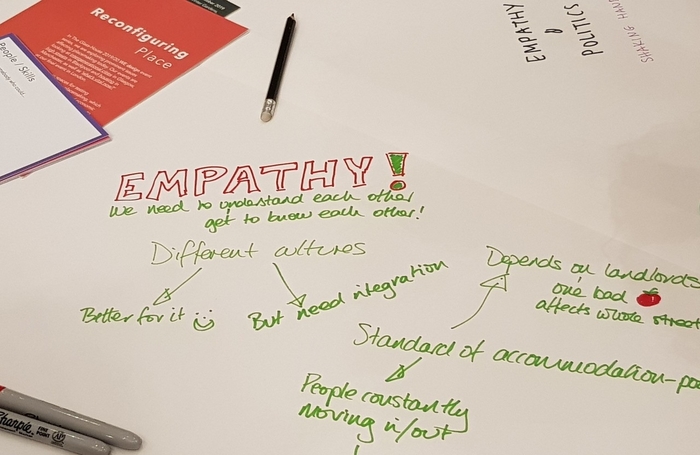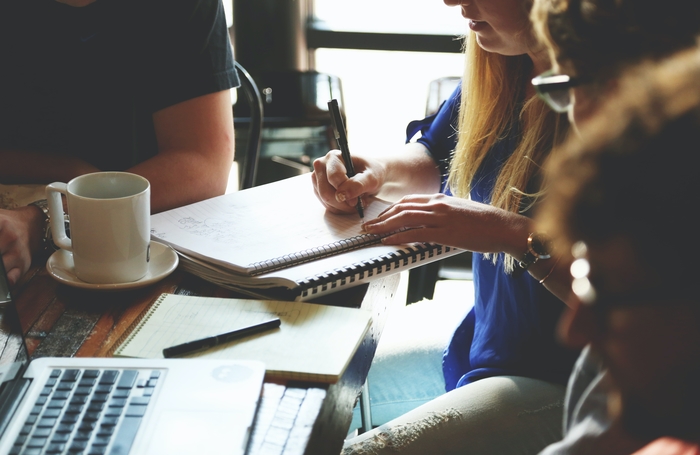The COVID-19 pandemic has revealed economic, cultural and public health fault lines within communities up and down the country. While the dynamics of these situations will vary from community to community, it is clear that places - and how they are structured - have played a crucial role in determining the impact the pandemic has had, either reinforcing or dissolving existing disparities. As we look ahead to the recovery, it is critical to ensure that our towns and cities are shaped to benefit and represent all communities.
In this blog post, part of a series published for the Future Place programme, Sophia de Sousa reflects on the pandemic and what it will mean for urban design and co-creation. Drawing on her own experience as CEO of Glass-House Community-led Design, she sets out a compelling vision for engagement and co-creation after COVID-19.
Business as usual, or reset?
They say that necessity is the mother of invention. If ever there were a time to be inventive, this is it.
The world over, we are dealing with the health crisis, disruption and socio-economic ramifications of the pandemic. It has changed our views on what we want and need from the places around us and has exposed deep divisions and inequalities. However, it has also shone a light on the resilience and generosity within our communities, and on the role that each of us can play in the collective good.
There is a growing shared sense of wanting to get back to work, but also the feeling that we shouldn’t just go back to business as usual. We have been handed a sort of reset button, and we must make courageous decisions about what happens next to create more equitable and sustainable places for the future.

New forms of leadership, new forms of collaboration
Making these courageous decisions will take inspired leadership and a shared spirit of experimentation and collaboration across all sectors. It will take us all rolling up our sleeves, putting our collective tools and assets on the table and putting our heads together to align and use our collective wealth and resources a little differently.
This collaboration will need to be championed, enabled, nurtured. Local authorities are extremely well placed to get the ball rolling. True, they have been deeply affected by years of austerity and the slashes to their budgets and staff that came with it. However, they still hold invaluable strategic powers and relationships and are in the position to convene a wide spectrum of people, organisations and interests.
The more people they can invite to the table to help, the better.
New partnerships
Effective collaborative placemaking starts with local authorities convening an open and honest conversation with existing and potential partners across all sectors, and with local people and organisations to identify and articulate shared values and goals. Individually and collectively, all these players will need to take a good look at what is on their proverbial plates, and map what they see as everyone’s role in championing, enabling, commissioning, and doing.
No one partner or sector can solve everything, but wouldn’t it be interesting to think outside our current boxes to see, with a genuine spirit of reciprocal generosity, how we might help each other?

Look to existing methodologies
This will not be achieved through a bog-standard consultation event. It will take political will and investment in creating the infrastructure to support this as a continuous and iterative dialogue in the long term. This need not be terribly complicated. There are a number of simple existing approaches, methodologies and mechanisms that can support this process, people already doing this across sectors and disciplines in different ways and others who can help. It will require leadership, a cohesive strategy and a combination of in-person and digital engagement to enable discussion, support co-design and catalyse collaborations.
Above all, we need safe spaces where we can come together and talk to each other openly, where we can recognise our differences, and find richness, complementarity, and opportunity in the diversity of people and organisations around the table.
So, to all you council leaders out there, I say: don’t be afraid to admit that you can’t do it all or to invite collaboration in. Welcome it, enable it, nurture it. Invite in partners and contributors of all shapes and sizes and value them all. Unearth your local assets and relinquish some of your power, but not your interest or involvement.
To everyone else, I say: think about and articulate what you have to offer, and work with your local authority and each other to redesign the rule book for collaboration in placemaking. Be inventive. Ask yourselves, “What do we need to change? What would make it possible? How can I help? And who can I work with to change it?”
About the author
Sophia de Sousa is Chief Executive at Glass-House community-led Design. If you liked this piece, you can also read Frederik Weissenborn's blog post "What if 'Place' is the best vehicle for delivering economic recovery?" over on The Glass-House Blog.









